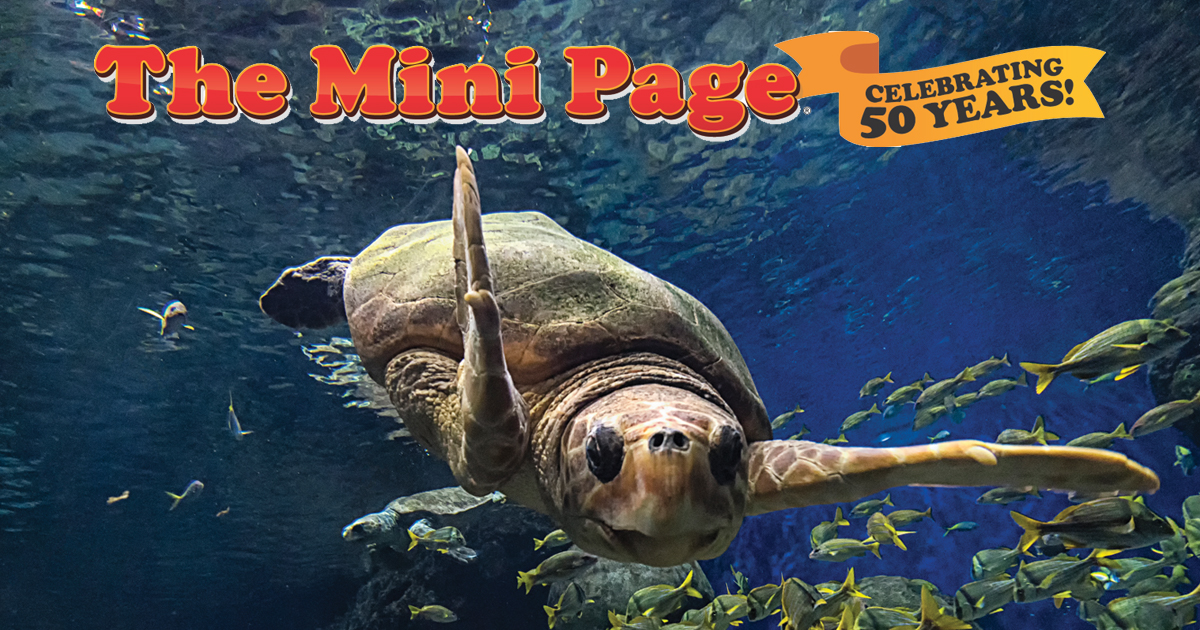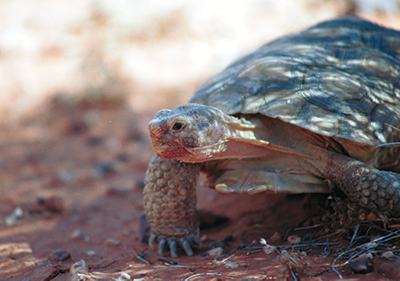
AMP | Kids is proud to announce an ongoing partnership with The Mini Page, now in its 50th year of providing engaging and fun learning opportunities to young readers across the country. This feature was originally syndicated in newspapers the week of June 1 – 7, 2019. It is distributed digitally here with permission from Andrews McMeel Syndication. Enjoy and share with the young learners in your life!
Let’s talk turtles! It’s fun to watch these creatures on land and in the water. The Mini Page takes a look at some of the things we know about these fascinating animals.
What are turtles?
Turtles are reptiles, a group of animals including crocodiles, tortoises, snakes and lizards. Reptiles:
- are cold-blooded, which means their body temperature matches the temperature of the air around them;
- have scaly skin;
- breathe air with lungs;
- produce eggs.
Turtles are known for the shells protecting their bodies. Their shells are part of their skeletons, or their framework of bones. Most shells are made of bone covered by hard plates, or scutes. (“Scute” rhymes with “cute.”) The leatherback turtle has a softer shell that is more leathery than bony.
Turtles have been on Earth for more than 245 million years! They shared the planet with dinosaurs.
Turtle or tortoise?
Tortoises are a type of turtle. People are often confused about which is which. Here are some of the differences:
Turtles:
- live mostly in or near water and are great swimmers;
- may not be able to pull their heads and limbs all the way into their shells. Land turtles can pull their heads in, but sea turtles can’t pull their heads in at all.
 Tortoises:
Tortoises:
- live only on land, and would probably sink in water;
- can pull their heads and limbs all the way into their shells for protection.
Designed for swimming
Turtles are strong swimmers. Besides having limbs shaped like flippers and paddles, their shells also are designed to help them move through the water. If you look at a turtle from the side, you can see it is shaped like an airplane wing. There is a high point in the front, and it curves to the back. This allows the water current to sweep over them quickly.
Freshwater turtles live near bodies of water such as ponds or lakes. They do not spend much time on land, although they do come onto land to sun themselves.
Although turtles can swim long distances, they don’t go very fast. They may average about 2 miles per hour, with bursts of 5 to 10 miles per hour.
Sea turtles
Sea turtles may live about 150 years. As soon as baby sea turtles hatch on a beach, they crawl to the sea and stay there for years. Males may stay in the water for 20 years before coming back to a beach even to sun themselves. Females return to the beach where they were born to lay eggs.
Some species, or kinds, of sea turtles stay near the shore. But others swim out into the deep ocean.
Sea turtles are usually found in warmer ocean waters. Big groups with thousands of turtles may spend hours floating on the surface of the water, sunning themselves.
Turtles in trouble
Almost all species of sea turtles are endangered. Many freshwater turtles are also in trouble. Some of the biggest dangers to sea turtles include:
- people killing turtles for their meat, skin or shells;
- fishing nets;
- plastic grocery bags. These look like jellyfish when they float in the water. But when the turtles eat them, the bags stay in their stomachs and kill them.
- hotels and homes on beaches where the turtles need to lay their eggs;
- bright artificial lights that confuse the turtles so moms won’t come ashore, or newly hatched babies can’t find the sea.
Resources:
On the Web:
At the library:
What’s the Difference? Turtles and Tortoises by Lisa M. Herrington
Teachers: For standards-based activities to accompany this feature, visit Andrews McMeel Syndication. And follow The Mini Page on Facebook!
